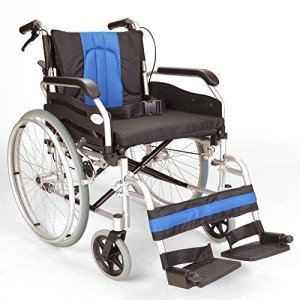Additional Wide Bariatric Wheelchair With 24" Seat
Frame

Wheelchairs are normally made in a basic width of 16" (narrow grownup), 18" (standard grownup) or 20" (broad grownup). However, some wheelchair users require a seat width broader than these standards. These extra wide bariatric wheelchairs are generally fitted by an expert and based on the user's measurements.
In order to get the most comfortable and safe and secure ride for travelers, it is very important that wheelchairs are properly sized. This indicates that the wheelchair must be able to accommodate the user's size while having the ability to navigate in tight areas. This is why BriteLift offers customized cars to transport wheelchair passengers. This consists of vans that can safely drive and maneuver big wheelchairs, enabling them to feel safe and comfortable in every trip. This is the only method to supply the most efficient transport for wheelchair passengers.
Seat
Bariatric wheelchairs are larger than standard wheelchairs and are developed to accommodate individuals who are much heavier or larger. This extra wide bariatric wheelchair from Medline features a 24" seat and a carbon steel frame with rust- and chip-resistant chrome plating. The wheelchair has tool-free push-button adjustable footrests and easy-to-clean vinyl upholstery. It can support approximately 500 lbs.
When selecting the ideal wheelchair width, it is essential to determine the user sitting generally on a flat surface area across their best part of the lap which is generally their hips. It is likewise advised that you use a yardstick rather than a determining tape as it tends to give a more precise measurement. If mouse click the up coming post will be using a winter season coat then an additional 2" ought to be included to the measurement of their seat width.
Weight Capacity
A bariatric wheelchair is typically larger and much heavier than standard wheelchairs. This is why they require more cautious maneuvering. Drivers require to be trained in handling these passengers. Furthermore, cars require to have sufficient space for these chairs in addition to ramps and wheelchair lifts. In addition, they need to understand how to set up these rides in advance.
When selecting the chair width, it is essential to measure the user's best point in the seat, which is typically the hips. Many wheelchair producers also use a yardstick that can be utilized to assist with this measurement. When measuring an individual's width, it is best to take the measurement straight throughout and not wrap the tape around their hips which can provide a false reading.
In some cases, the largest part of an individual's thighs may be broader than their hips so this ought to be considered when choosing the chair width. In these instances, it is often essential to add an additional 2" to the chair width.
In basic, the weight capacity of a bariatric wheelchair ought to not be surpassed under any scenarios or severe injury may result. When utilizing the chair, always make sure that it is on a steady and level surface with front casters pointing forward and wheel locks engaged. In addition, never lean or move the center of gravity while being in the chair.
